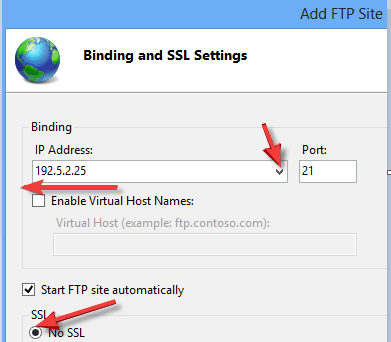


When you open IIS in Vista or earlier for the first time, you’ll only see your computer name in the left hand menu. You should now see an icon for Internet Information Services. So go to Start, then Control Panel and click on Administrative Tools. Now we want to go ahead and open the IIS configuration panel to set up the FTP server. Once IIS has been installed, you may have to restart your computer.

You shouldn’t need a disc for Windows 7 or higher. You may be asked to insert your Windows XP or Windows Vista disc at this point. Windows will go ahead and install the necessary IIS files along with the FTP service. For FTP, you need to check the FTP Service box otherwise you won’t have the option to create an FTP server.Ĭlick OK and then click Next. You also need to make sure you check the Web Management Tools box otherwise you won’t be able to manage IIS from Administrative Tools later on. Before you click Next though, make sure you click on Details and then check File Transfer Protocol (FTP) Service.įor Windows 7 and up, go ahead and click on the box next to Internet Information Services and FTP Server. In the components wizard, scroll down until you see IIS in the list and check it off. For Windows 7 and higher, click on Programs and Features from Control Panel and then click on Turn Windows features on or off. Then click on Add/Remove Windows Components. In Windows Vista and earlier, click on Start, Control Panel and go to Add/Remove Programs. Remember, IIS only comes with Pro, Professional, Ultimate or Enterprise versions of Windows. The first thing you’ll need to setup your own FTP server in Windows is to make sure you have Internet Information Services (IIS) installed. It’s best to use IIS 7.5 or higher if possible as they support the most features and have better performance. IIS 7.5 was released along with Windows 7, IIS 8 released with Windows 8 and IIS 8.5 released with Windows 8.1.


 0 kommentar(er)
0 kommentar(er)
